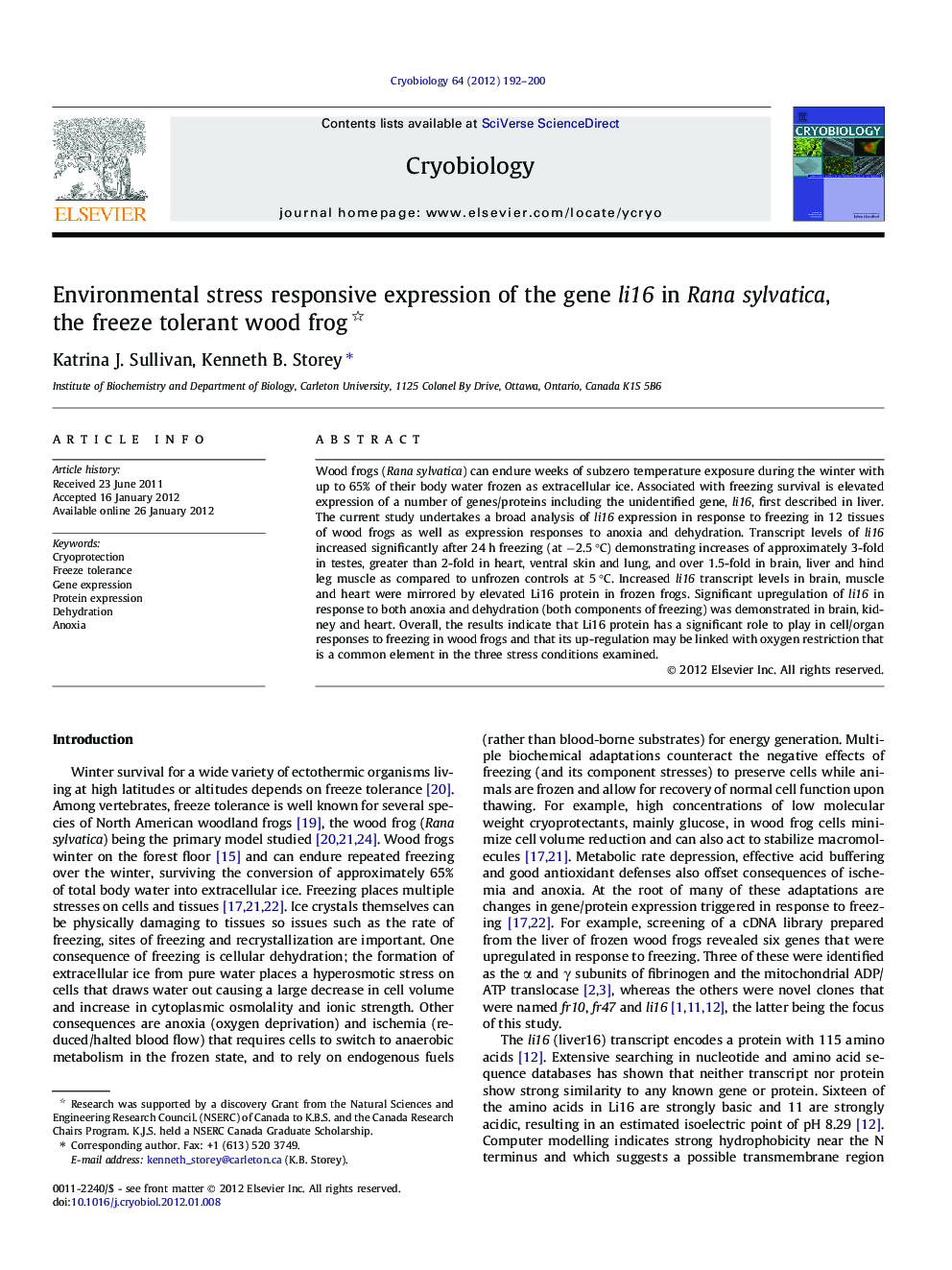| Article ID | Journal | Published Year | Pages | File Type |
|---|---|---|---|---|
| 2168703 | Cryobiology | 2012 | 9 Pages |
Wood frogs (Rana sylvatica) can endure weeks of subzero temperature exposure during the winter with up to 65% of their body water frozen as extracellular ice. Associated with freezing survival is elevated expression of a number of genes/proteins including the unidentified gene, li16, first described in liver. The current study undertakes a broad analysis of li16 expression in response to freezing in 12 tissues of wood frogs as well as expression responses to anoxia and dehydration. Transcript levels of li16 increased significantly after 24 h freezing (at −2.5 °C) demonstrating increases of approximately 3-fold in testes, greater than 2-fold in heart, ventral skin and lung, and over 1.5-fold in brain, liver and hind leg muscle as compared to unfrozen controls at 5 °C. Increased li16 transcript levels in brain, muscle and heart were mirrored by elevated Li16 protein in frozen frogs. Significant upregulation of li16 in response to both anoxia and dehydration (both components of freezing) was demonstrated in brain, kidney and heart. Overall, the results indicate that Li16 protein has a significant role to play in cell/organ responses to freezing in wood frogs and that its up-regulation may be linked with oxygen restriction that is a common element in the three stress conditions examined.
